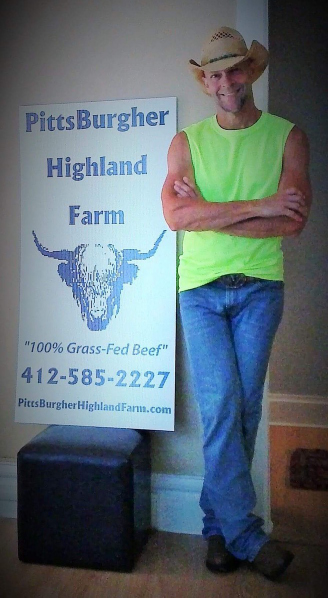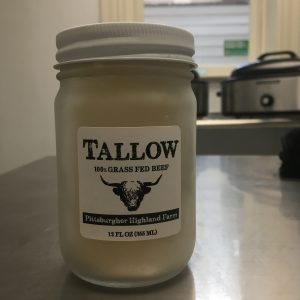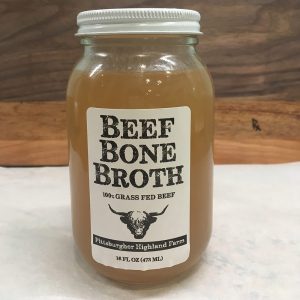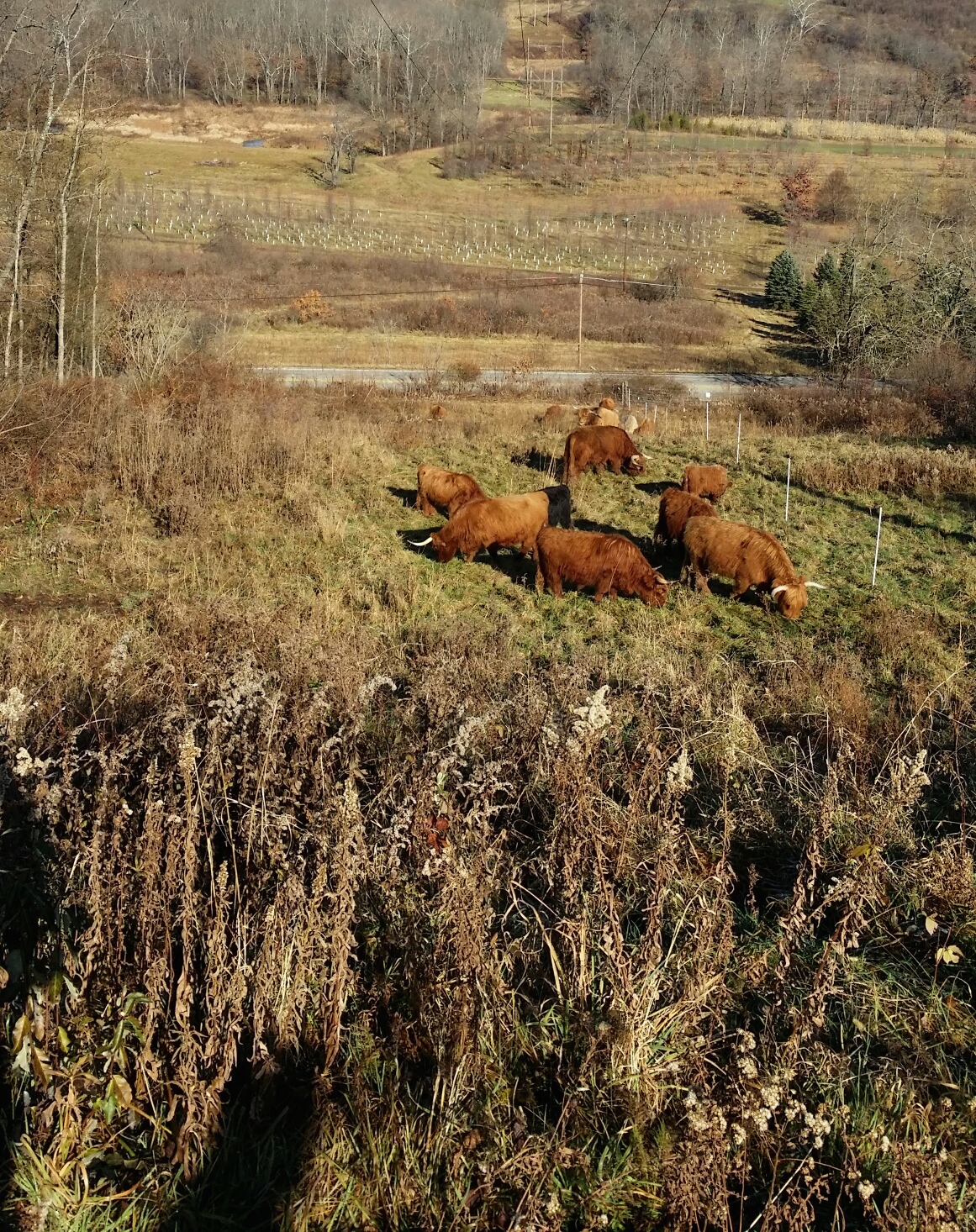Everyone has a story, and mine probably isn’t that different than most – until about 14 years ago in late 2008. That’s when I left a relatively secure job with a Pittsburgh-based real estate consulting firm and began my own consulting practice helping distressed communities repurpose commercial properties as an economic development tool. It’s also the year I purchased my first Scottish Highland cattle, a leap from the cattle of my childhood; but also, the culmination of a full-circle journey.

Life for me began on my family’s sixth generation dairy farm in Jefferson County, Pennsylvania. Some of my fondest memories growing up were times spent with my grandfather and the stories of how they grew a small family farm into a thriving dairy and cattle trading business revered by most in the area. While my father moved on to new endeavors after he and my mother divorced, he remained a livestock auctioneer at the sale barn started by Grandpa and his partners. My older brother graduated from college with a degree in dairy husbandry and returned home to take over and expand the business further, using the science he had learned to increase production in a big way. This was a “conventional” farming operation, making full use of production efficiencies including grain-based feed rations, conventional tilling, and heavy use of herbicides and pesticides. When I was elected to statewide office in the Future Farmers of America my senior year of high school it seemed like destiny that I would go to college, major in ag and join my brother on the farm. I enrolled at Penn State, majoring in ag education.
College was an eye-opening experience in more ways than one. A relatively sheltered childhood had not given me exposure to the diverse array of people that life at a multi-campus university of nearly 100,000 students did. It didn’t take long to realize that I could choose from hundreds of majors that would prepare me for a career that didn’t involve waking before dawn for the rest of my life! Uncertain of the path, I switched majors to Liberal Arts and graduated with a B.A. in General Arts and Sciences with a liberal studies option in business. While still uncertain about a career path, I knew then that I wanted to at least control my own destiny.
I landed my first job in response to a Pittsburgh newspaper ad seeking an entry level commercial office and retail leasing rep. The company hired me at a very entry level salary; but one that included a place to live. Pittsburgh wasn’t necessarily where I intended to settle; but it was a bigger and more exciting place than anywhere I’d ever lived and was only a couple hours from home (and a couple hours away, an added advantage).
The career I started at Allegheny Center lead to better jobs with better pay, a couple years in Philadelphia before returning to Pittsburgh, and ultimately to some outside gigs as a marketing consultant for various commercial developments. As I matured both professionally and personally, I developed an interest in community development, historic preservation and adaptive reuse of neglected properties, something many parts of Pittsburgh had in abundance after the collapse of the steel industry.
After successfully battling addiction, I became interested in healthy living, beginning to exercise, eat better and develop an appreciation for physical activities that I had previously ignored. For the first time in my life, I began to purchase and consume organic and sustainably produced products and grass-fed beef, locating a farm in eastern Ohio that raised Highland cattle on grass under organic certification. It was owned and operated by Max Van Buren, a former dairy farmer and vet turned into what he called “health food geek.”
Part of growing emotionally is experiencing new things and a willingness to change. I did a lot of changing in my sober life. An adherence to dogmatic religious practices gave way to a more enlightened sense of spiritual awareness. Political views shaped early in life by rigid conservative principals gave way to what I hoped was a more broad and open-minded perspective. A life of uncertainty and even shame about who I was morphed into an acceptance of my very being – the good, bad, and ugly – and comfort within my own skin.
I also started to question everything I had ever learned about agriculture and food production. Having grown up around Holsteins and other common commodity cattle breeds, I knew little beyond the accepted conventional methods of production I learned as a kid. Furthermore, I had spent most of my adult life as a white-collar professional, largely ignoring all things farming and livestock except for the occasional conversation with my brother about such topics. To him and to most farmers, words like “sustainable” and “organic” were not just weird but suspect. Suddenly my evolving world had me interested in healthy meat, and the Scottish Highland cattle that Max raised intrigued me. My husband and I explored the idea of launching a grass-fed organic hamburger joint in downtown Pittsburgh sourcing the burgers from Max or similar operations. Yet my interest gravitated more toward beef production and the Highland breed itself, and the broader concept of raising cattle on the grass diet they were intended to consume.
Scrapping the restaurant idea, I used the proceeds from a leasing commission to buy my first four Highlands, growing them over a summer on a friend’s farm east of the city. I sold all four before winter and purchased a herd of ten the following spring that included registered females and a bull. For the next few years, I ran a hobby operation breeding Highlands and raising them on grass for butcher and sale to some friends and neighbors. The herd size never exceeded 17 animals during that time.
In early 2014 I was approached by Tom O’Connor, a colleague of many years who owned a successful construction business based in my neighborhood of Wilkinsburg. Tom and his wife Dana had recently gone paleo and were looking for a reliable source of grass-fed beef that bypassed the grocery store. Could I be that source? Turns out that with some help from the O’Connor’s to grow the operation, I could – and then some.
Armed with capital, Dana and I found a 142-acre spread southeast of Pittsburgh near New Stanton that we rented with the intent to reach a herd size of 50, raising Highland cow/calf pairs and steers for butcher. We established a relationship with a trustworthy processing facility in nearby Scottdale and located storage freezers in a corner of Tom’s construction warehouse in Wilkinsburg. We teamed up with a fledgling urban farmers market in Pittsburgh’s Bloomfield neighborhood and built a customer base via trade shows, social media and simple human connectivity. We bought a truck for my use, I left the rat race and began to build a herd and improve our production practices while Dana worked to build our largely urban customer base.
The customer base grew fast; so fast that we struggled to have enough butcher-ready animals to meet the demand. We quickly surpassed the goal of 50 animals and soon added a second and third rented farm to accommodate what became a herd of 130. We also quickly realized that Highlands, while hardy, efficient and relatively low maintenance animals, also grew more slowly than most breeds and topped out with smaller average frames, a challenge when trying to meet a growing demand for product. After considerable research I decided to preserve the best of the breed and add some growth by crossing Highlands with a Devon bull. Keystone Calvin joined the herd in 2018 and greatly improved the rate of gain, size and quality of beef.
Living and learning, we concluded that 130 animals was a few too many and that maintaining three farms was a diminishing return, sacrificing quality in favor of quantity. Recalibrating our efforts, we reduced the herd size to 75 on two farms, established relationships with a few trusted growers of similar animals to augment our pipeline and meet the demand for quality grass-fed meat, and added pork and lamb to the mix via buying arrangements. While it remains a goal to add our own sheep and lambing operation at the farm, we are happy to help other like-minded growers of cattle, hogs and lambs by buying their livestock and handling the retailing of the end product, a task most farmers loath. We added a small flock of free-range laying hens to our mix and the sale of pastured eggs, while not a huge profit boost, has along with lamb and pork done much to diversify our product base.
Highland House, an 8 by 20-foot tiny home, arrived on wheels a few years ago as part of an effort for my husband (also named Mark; yes really) and I to spend more time at the farm. The structure is powered via a 2,800-watt solar system, propane heat, collected rain water and a compostable toilet. While the idea of a second home on the farm didn’t evolve to the extent that we’d first envisioned, we have been able to create a new profit center by renting Highland House through Airbnb and make Pittsburgher Highland Farm a destination for agritourism and education.
We have also more recently sought to establish “sustainable collaborative partnerships” with others interested in growing food in a socially and environmentally responsible way. Thus far we have developed a relationship with Paul and Agerim Boone for development of an organic garden and produce plot and with Todd Slingluff for development of a beekeeping and honey operation on the farm. The Boones were Highland House guests initially. Todd has helped occasionally at the farm since our move there in 2014. We’re hoping that these partnerships grow and expand to include a greenhouse and more produce, orchard and fruits, sheep, lambs and hogs as well as added variety and expanded poultry.
So, this city slicker has come full circle – dairy farmer to, well whatever it is that I’m doing now. The goal for Pittsburgher Highland Farm is development of a sustainable farm lab of sorts. The initial idea of supplying healthy beef to an urban customer base has grown and evolved into a mission of encouraging that same customer base to know their food. Through Highland House and the newly developed Highland Farm Trail and encouraging farm tours and visitation we are making the farm a center of education, recreation, and new experiences. It is a living, breathing and beautiful thing!
 Tallow is made by rendering suet which is the fat of cattle or sheep, typically the fat that surrounds the animals organs. The process of rendering involves gently heating suet to separate the fat from any remaining muscle or connective tissue. The result is a pure fat that once cooled, is solid at room temperature.
Tallow is made by rendering suet which is the fat of cattle or sheep, typically the fat that surrounds the animals organs. The process of rendering involves gently heating suet to separate the fat from any remaining muscle or connective tissue. The result is a pure fat that once cooled, is solid at room temperature. Bone broth is a staple in many traditional diets and are said to be the cure-all for many health issues ranging from the common cold to autoimmune disease and even for weight loss. What is it about bone broth that has raised such interest in the health world?
Bone broth is a staple in many traditional diets and are said to be the cure-all for many health issues ranging from the common cold to autoimmune disease and even for weight loss. What is it about bone broth that has raised such interest in the health world? We plan to delve more deeply into some of the nutritional differences between grass fed and conventional beef in future posts but thought it would be useful to begin with an overview.
We plan to delve more deeply into some of the nutritional differences between grass fed and conventional beef in future posts but thought it would be useful to begin with an overview. Lower / Slower
Lower / Slower Form burger patties, 6-8 ounces.
Form burger patties, 6-8 ounces.